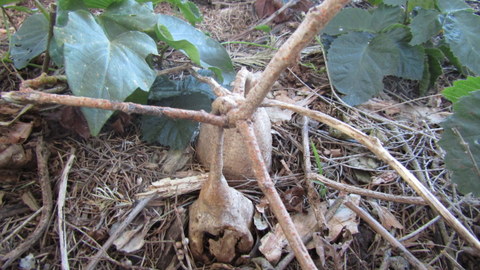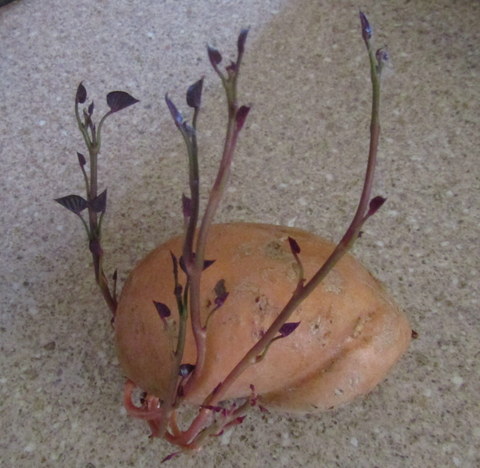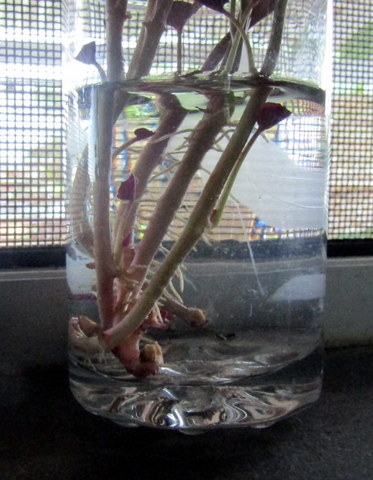Although sweet potato is strictly speaking a tropical crop, here in western Sydney where we can get frosts down to -3°C, I can still grow it and get a reasonable harvest, although it does die down over winter. We grow the orange variety here, for no better reason than that is the one we like to eat!
Sweet potato is an easy to grow, productive and multipurpose crop. Not only is the root edible but the leaves can also be used as an edible green. It is a climber as well and so can be used to shade other plants or structures by growing it up a trellis or similar and will give your garden a 3-D effect.
It has been pretty dry here lately and sweet potato can be thirsty, so I am using one of the low tech, high efficiency irrigation methods – buried pipe – to improve things.
We have tried a number of ways to grow it over the years –
20 litre container
This was pretty easy, I just filled a recycled 20 litre bucket with potting mix and then shoved a sweet potato into it and let it grow! It grew fairly well over the season, producing nice, green and healthy looking vines. When I came to harvest it however, the bucket was filled with a whole stack of long spindly and twisty tubers. For the size of the bucket I suppose the harvest was reasonable but they were not big tubers, although after harvest and aging they tasted quite reasonable so the experiment worked fairly well.
Shove ‘em in the ground
While not being particularly high tech, this way was certainly the easiest. Being perennials they don’t fit particularly well in our rotation so I grow them in the front yard, wherever a small pocket is available and preferable somewhere where the vines can grow up an associated tree or other structure. We dig the area over, plant a sweet potato and away we go! This has worked pretty well for us over the years but it not as productive as it could be, you exchange a small sweet potato for a larger one or clump of tubers at the end of the growing season.
It is possible to increase the output of sweet potatoes when using this method, however. As the vines are produced, if they touch the ground they will send roots into the soil and in time a tuber will develop, so by pressing them down and securing with a U-shaped wire staple or even burying a vine part way along its length a number of tubers can be developed.
Growing from Slips
This process is slightly more effort, but still ridiculously easy, and from one sweet potato tuber you get a whole stack. You can put a tuber into water and wait for it to sprout, but we don’t even bother to do that and find, if left to their own devices, sweet potato tubers will send out sprouts (or slips) anyway. Store them away in a cupboard and keep an eye on them until the slips start to be produced, then just break off the slips from the parent tuber and place into a glass of water. They will send out roots over a few weeks, and then they can be planted into potting mix to grow on. Or leave them to develop a better root system for a few more weeks, then plant them out where you want them to grow.
Make sure the place they are planted out into is a friable, well-drained soil with plenty of organic matter. We are in the process of developing up our old banana circle in the front yard to grow sweet potatoes and as mentioned above I have already installed a buried pipe waterer around the old circle with a watering point in each side to facilitate easy watering.
Storage
We find that they are not as flavourful or sweet if eaten directly after harvest, but if stored in a cool, dry and dark space for a month or so they are much improved.








